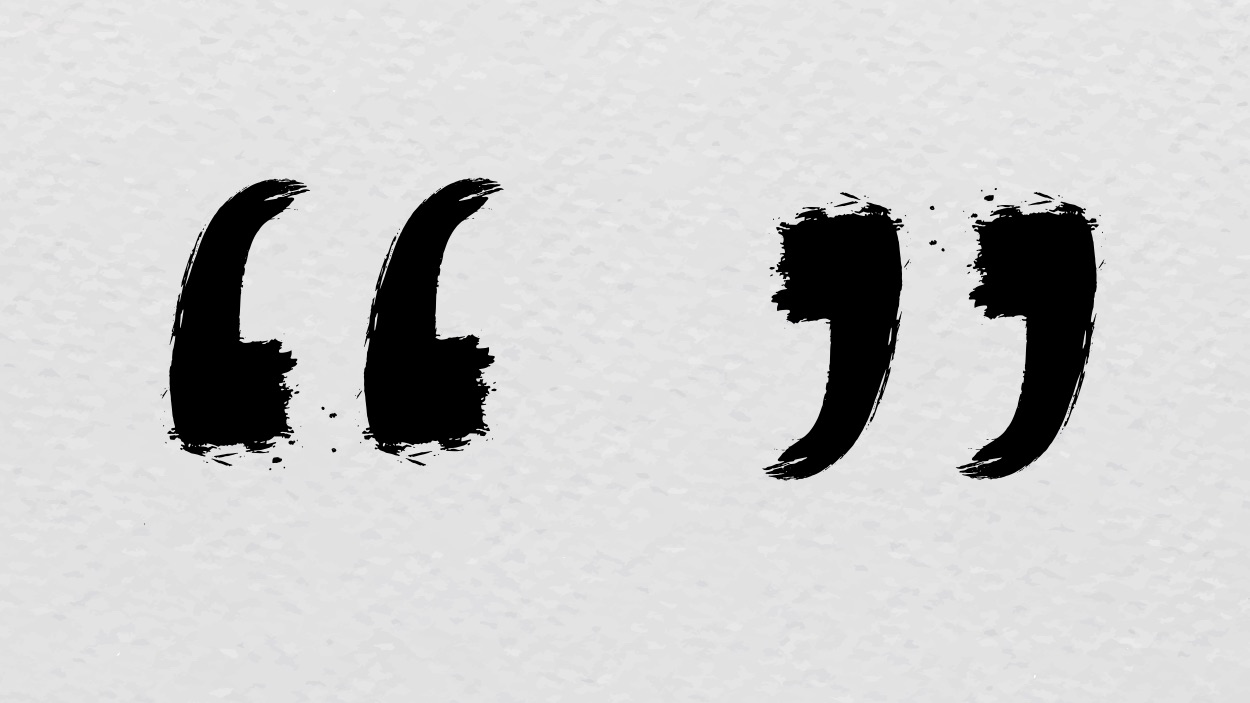One of the main things that any editor or proofreader looks out for while editing a piece of text is punctuation marks. The reason is simple — they can alter the meaning of your text if you do not use them correctly. It becomes even more prominent when you are writing an academic paper. In academic writing, an author may be easily misunderstood when ambiguous sentences are used. Punctuation marks mainly serve the purpose to disambiguate sentences. While literary or other types of writing will have a certain degree of freedom for using punctuation marks, academic work needs to be precise and correct. This article will cover the importance of punctuation marks in academic writing.

This article discusses the importance of punctuation marks in academic writing. To give you an opportunity to practice proofreading, we have left a few spelling, punctuation, or grammatical errors in the text. See if you can spot them! If you spot the errors correctly, you will be entitled to a 10% discount.
One of the main things that any editor or proofreader looks out for while editing a piece of text is punctuation marks. The reason is simple — they can alter the meaning of your text if you do not use them correctly.
Imagine texting your colleague ‘‘Let’s eat Carla’’ or ‘‘Let’s eat kids’’ without a comma after ‘‘eat.’’ Here, you are implying that you eat Carla or kids, not eat with Carla or with the kids. The correct sentence here is ‘‘Let’s eat, Carla’’ and ‘‘Let’s eat, kids.’’ Thus, it is extremely important to look out for the correct use of punctuation marks.
It becomes even more prominent when you are writing an academic paper. While literary or other types of writing will have a certain degree of freedom for using punctuation marks, academic work needs to be precise and correct. In academic writing, an author may be easily misunderstood when ambiguous sentences are used. Punctuation marks mainly serve the purpose to disambiguate sentences. With that thought in mind, in this article, we will cover the importance of punctuation marks in academic writing.

We shall start by understanding why the correct use of punctuation marks is important. Below are the reasons why using the correct punctuation mark in the right place is so crucial. It is especially so in the case of academic writing:
Right punctuation allows your readers the perceive the right message of your text.
In academic writing, punctuation marks can help strengthen your arguments and reasoning in the text form.
Missing punctuation marks or misused ones can completely alter the meaning of a sentence.
It helps emphasize pauses, thoughts, ideas, and even the tone and emotion of the text.
Now that we have understood the reason why punctuation is so important, we shall now move on to discuss the different types of marks out there. We will also provide you with relevant examples so that you understand the differences.
If you are ready, let us start!
A period is one of the most commonly used punctuation marks and is popularly known as a full stop. As its name suggests, it is mostly used at the end of a sentence to denote that it has ended. It is placed after a declarative sentence and a statement. It is also used after abbreviations.
For example:
|
End of a sentence |
I worked from morning to evening. |
|
After abbreviations |
He is Dr. Jonathan of the ER dept. |
The next most commonly known and used among the punctuation marks is the comma. The comma denotes a small pause or gap anywhere in the middle of a sentence to provide more clarity. A comma can be used for various instances, like grouping items, separating phrases, and so on. However, misusing commas or overusing them can be a huge issue.
For example:
Incorrect: We will learn how to cut and paste children!
This can imply a pretty horrific meaning. However, the right sentence is:
Correct: We will learn how to cut and paste, children!
Incorrect: I was ready to leave, but it started raining, so I called a taxi, but it was late, so I was late.
There is no need for so many commas. Instead, you can break down the sentence.
Correct: I was ready to leave when it started raining. So I called a taxi, but because it was late I was late too.
Other examples:
|
In lists: |
I need to buy coffee, mayonnaise, and eggs from the grocery store. |
|
Direct speeches: |
He exclaimed, “Watch out!” |
|
In lists |
I need to buy coffee, mayonnaise, and eggs from the grocery store. |
|
Direct speeches |
He exclaimed, “Watch out!” |
There’s also a type of comma known as the ‘‘Oxford Comma.’’ This type of comma is mainly used when talking about three items or more in a sentence. It is placed before the last item that you listed. Without an Oxford comma, you may confuse your audience.
For example:
Incorrect: I love my parents, Mother Teresa and Barack Obama
Here, your audience might think that your parents are Mother Teresa and Barack Obama.
Correct: I love my parents, Mother Teresa, and Barack Obama.
Other examples:
We need to choose between samples A, B, or C.
The survey depended on the age, gender, and location of the participants.

One of the common punctuation errors in academic writing is the use of commas and semi-colons. As mentioned above, a comma separates items in a list but does not distinguish two independent sentences from each other. For example:
Smith had never ridden on the back of a camel, he tried out of curiosity.
A semi-colon is the correct punctuation mark to use in place of the comma as both clauses are independent, with the second clause providing an explanation for the first. A comma is only appropriate in this instance if conjunction follows the comma. In which case, there would not be a need for a semi-colon.
Correct: Smith had never ridden on the back of a camel; he tried out of curiosity.
OR
Correct: Smith had never ridden on the back of a camel, so he tried out of curiosity.
An exclamation mark is used at the end of a sentence that either expresses surprise or exclamation and in a direct speech that denotes that the speaker is either speaking loudly or shouting. It is also used when the author finds something amusing and is usually written within brackets like this: (!)
Here are some examples:
|
Denoting surprise or exclamation |
Hi! How can I help you? |
|
Denoting a shout or scream |
The guard shouted, “Watch out!” |
|
Denoting amusement |
To think they would not recognize me! |
The question mark is another punctuation mark that is used often, and the meaning is well understood. It is used after a question is asked in direct speech.
When will you return home?
The next punctuation marks to discuss are colons and semicolons. A colon is a mark used after a word to introduce an explanation, example, or another phrase that explains the first one.
Here are some examples:
There were three variants: green, blue, and red.
We did not go to the fair: we were already late.
A semicolon serves the purpose between a period and a comma. It is used as a pause which is a little stronger than a comma but not as definitive as the period. It is used where two clauses are related to one another and can be written in one sentence.
For example:
We experimented for three days; it was successful.
A lot of times, people tend to confuse semicolons and colons with each other. However, please pay attention to such mistakes.
For example:
Incorrect: He bought the following food items; burger and coke.
However, this sentence is wrong because the phrase ‘‘burger and coke’’ is a dependent clause. Therefore, the correct sentence would be:
Correct: He bought the following food items: burger and coke.
Now that we know what punctuation marks are and why they are important, you can understand why the academic field is so stern about them. After all, the wrong punctuation marks can completely alter the meaning of your sentence or even convey the wrong message. Therefore, make sure to learn about punctuation marks and use them appropriately.
Best Edit & Proof expert editors and proofreaders focus on offering manuscripts with proper tone, content, and style of academic writing, and also provide an upscale editing and proofreading service for you. If you consider our pieces of advice, you will witness a notable increase in the chance for your research manuscript to be accepted by the publishers. We work together as an academic writing style guide by bestowing subject-area editing and proofreading around several categorized styles of writing. With the group of our expert editors, you will always find us all set to help you identify the tone and style that your manuscript needs to get a nod from the publishers.
You can also avail of our assistance if you are looking for editors who can format your manuscript, or just check on the particular styles for the formatting task as per the guidelines provided to you, e.g., APA, MLA, or Chicago/Turabian styles. Best Edit & Proof editors and proofreaders provide all sorts of academic writing help, including editing and proofreading services, using our user-friendly website, and a streamlined ordering process.
Kindly visit our order page if you want our subject-area editors or language experts to work on your manuscript to improve its tone and style and give it a perfect academic tone and style through proper editing and proofreading. The process of submitting a paper is very easy and quick. Click here to find out how it works.
Our pricing is based on the type of service you avail of here, be it editing or proofreading. We charge on the basis of the word count of your manuscript that you submit for editing and proofreading and the turnaround time it takes to get it done. If you want to get an instant price quote for your project, copy and paste your document or enter your word count into our pricing calculator.
Contact us to get support with academic editing and proofreading. We have an active live chat module to offer you direct support along with qualified editors to refine and furbish your manuscript.
Follow us on Twitter, LinkedIn, Facebook, Instagram, and Medium.
For more posts, click here.
How to Determine Variability in a Dataset
14.10.2023
How to Determine Central Tendency
19.02.2023
How to Specify Study Variables in Research Papers?
14.01.2023
Population vs Sample | Sampling Methods for a Dissertation
14.01.2023
How to Ensure the Quality of Academic Writing in a Thesis and Dissertation?
04.12.2022
How to Avoid Anthropomorphism in Your Dissertation?
04.11.2022
How to Write a Research Methodology Section for a Dissertation and Thesis
07.08.2022
How to Write a Theoretical Framework for a Dissertation and Thesis?
05.08.2022
How to Write Literature Review for a Dissertation and Thesis
02.08.2022
How to Write a Dissertation and Thesis Introduction
31.07.2022

Whether you are new to academics or have been around for a while, you must understand that research is a critical segment of the academic field. Therefore, it is essential to know the WHATs, WHYs, and HOWs of it. Pertaining to that, this article discusses different types of research methods that you will come across. Namely, they are — quantitative research and qualitative research. Here, we will learn what these types of research are, how they are different, and when they are used. This will be especially helpful for researchers and students who are just starting with their research.
Continue Reading
Writing assignments is not like any other homework you’ve ever done or will do in your academic life. Writing assignments demands unrestrained dedication and plenty of willpower. You cannot just open a book and copy-paste its contents with some rephrasing. To write a better assignment, you need to work hard, you need to research, plan, draft, and edit carefully. Writing an assignment paper is one thing and writing an impactful assignment paper that instills a positive impression of you in your professor’s books and elicits good grades out of him/her is another one. The following tips will help you write a perfect assignment paper.
Continue Reading
Blog writing is an effective way to share your knowledge and ideas with your target group. Here you can dive deep and talk about your favorite topics, showcase your expertise and attract an audience or readers interested in your work. However, creating a perfect blog post can sometimes get overwhelming – from choosing the right topics to selecting the proper format for your articles to picking images that generate interest and engagement, it's no less than a task.
Continue Reading